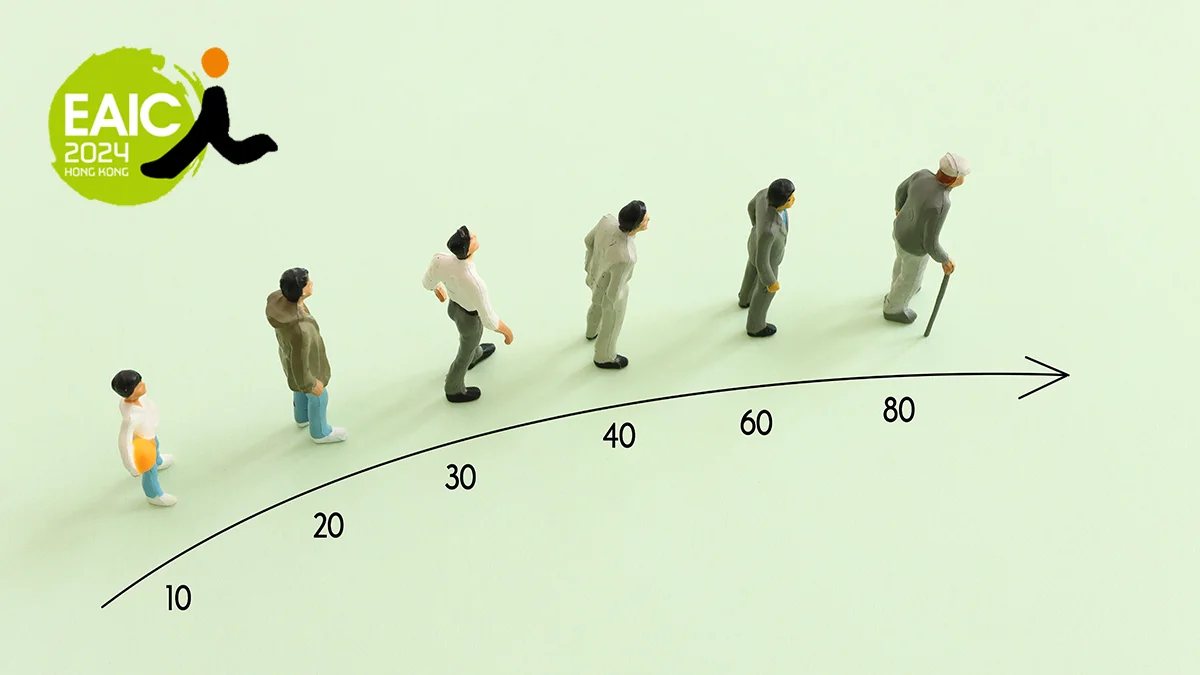(Re)in Summary
• The global population is expected to hit 10 billion in 2050 just as fertility levels are dropping close to the replacement rate.
• Demographic change is acute in Asia with the median population age increasing at more than twice the speed previously experienced in Europe and North America.
• This demographic transition is driving a major change in demand for health and wealth insurance products in Hong Kong and Macau, according to AIA’s Alger Fung.
• Fung said that Hong Kong is on course to surpass Switzerland as the largest global repository of cross border wealth assets by 2027.
Greying populations, an expanding middle class, and plummeting fertility rates mean that Asia is now in the vanguard of global demographic change and this transition will spur an evolution in the types of health and wealth management products offered by insurers, according to Alger Fung, CEO of AIA’s Hong Kong and Macau business.
Fung said in a presentation to the EAIC in Hong Kong last week that in the last 70 years the global population has surged from 2.5 billion to reach eight billion in 2024 and is slated to be close to 10 billion by 2050. Simultaneously, the global average life expectancy has climbed dramatically from 46 years in 1950 to 74 years today.
A less welcome change is the collapse of global fertility rates over the same period, from roughly five to 2.4 today, perilously close to the 2.1 replacement rate. Two thirds of the global population now live in regions with fertility rates below this level, according to Fung who said that demographic transition was now happening at rapid pace in Asia.
“It took half a century for the European and American median age to increase from 30 to 40, whereas countries like South Korea, Japan, China, and Thailand saw this shift occur in just 20 years. By 2031 one in every six people globally will be over age 60 and in Asia, this ratio would be one in four,” said Fung.
Healthcare costs
Hong Kong is particularly exposed to demographic change with 30% of its population slated to be over 65 by 2030, compared with 20% today. Fung said this would put strong upward pressure on healthcare costs.
Challenges are, as ever, also opportunities and Fung said that demographic change in Asia was accompanied by a financial evolution in the form of a rapidly expanding middle class. He said that by 2030 60% of Asia’s population would be middle class and the mass affluent demographic in Southeast Asia would number 40 million by the same date.
Alger Fung
CEO of AIA Hong Kong and Macau“The growth of the Asian middle class and a generational transfer of wealth are combining to create demand for wealth, products and services,” the CEO said.
According to Fung, Hong Kong, which is already the largest cross border wealth management centre in Asia (AUM US$2.2trn 2022), was projected to surpass Switzerland by 2027 as the largest cross border wealth centre globally.
“These figures are not just statistics. They represent a fundamental shift in the social economic fabric of our societies, and have profound implications on wealth creation as well as preservation, and the demand for high quality protection and financial advice”, Fung said.
The CEO said that the insurance industry was responding to these changes by developing products in areas such as retirement income, and long term care and health insurance.
“Insurance takes on substantial risk liabilities, reducing the strain on public welfare systems, particularly economies with shifting demographics and ageing populations.
Life insurance centres on the long term and also plays a crucial role in capital formation by stimulating long term savings from households and providing long term funding for government and public sectors via the capital markets,” he said.
Healthier life spans
Fung said that insurance could play a role in supporting the changes to healthy life span – the length of time that a person is healthy, not just alive – that are expected to occur in tandem with a rise in life expectancy.
Fung pointed to AIA research which showed that suboptimal health was already a significant issue in the Greater Bay Area. He said that 80% of high net worth individuals in Hong Kong, Macau and other GBA cities exhibit symptoms such as fatigue, backache, irritability, anxiety, and that this issue was well understood by consumers.
“As a life and health insurer, we have been committed to enhancing the health of our customers, to help them live healthier, longer and better lives, a benefit to the customers of business and society at large, which is also our promise for us,” Fung said.
The CEO said that insurers could help with the issue of suboptimal health with initiatives such providing more accessible predictive and preventive care to customers, and creating more cost effective and high quality care management models.
“Ultimately, health is the society’s work as well. By prioritising health, society can achieve better productivity, reduce public health care costs and possibly impact societal wellbeing, creating a virtuous cycle that stimulates economic growth and opens new opportunities in financing and employment,” Fung said.
























